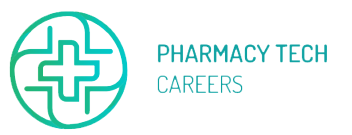Definition of a Pharmacy Technician
Pharmacy technicians play a crucial role in the healthcare system by supporting pharmacists in various aspects of their work. They work in pharmacies, hospitals, and other healthcare settings to ensure the safe and effective delivery of medications to patients. Let’s delve deeper into the job description, required education and training, as well as the job outlook for pharmacy technicians.
Job Description
Pharmacy technicians work under the supervision of licensed pharmacists, assisting with tasks related to medication dispensing and patient care. Here are some key responsibilities of a pharmacy technician:
- Preparing prescription medications by measuring, packaging, and labeling them accurately
- Processing prescription orders and verifying insurance information
- Managing inventory and ordering supplies
- Providing customer service by answering questions and addressing concerns
- Compounding medications as per specific instructions
- Maintaining patient records and confidentiality
Required Education and Training
While formal education requirements vary by state, most pharmacy technicians typically complete a high school diploma or equivalent. However, employers often prefer candidates who have completed post-secondary pharmacy technician programs. These programs can be found in community colleges, vocational schools, and some hospitals.
During their training, pharmacy technicians learn about pharmaceutical calculations, drug classification systems, compounding techniques, and medication safety protocols. They also gain practical experience through internships or externships in pharmacies.
Job Outlook
The job outlook for pharmacy technicians is promising. According to the Bureau of Labor Statistics (BLS), employment in this field is projected to grow 4 percent from 2019 to 2029, which is about as fast as the average for all occupations.
The increasing demand for prescription medications, an aging population, and advances in pharmaceutical research contribute to the need for more pharmacy technicians. Additionally, as pharmacists take on more patient care responsibilities, pharmacy technicians will continue to play a vital role in supporting them.
Pharmacy technicians can find employment opportunities in various settings, including retail pharmacies, hospitals, long-term care facilities, and mail-order pharmacies. They may also work in pharmaceutical companies, insurance companies, and government agencies.
In conclusion, pharmacy technicians are essential members of the healthcare team who assist pharmacists in providing safe and effective medication services to patients. With the right education and training, individuals can embark on a rewarding career with promising job prospects in this field.
For more information on becoming a pharmacy technician, you can visit the following reputable websites:
– Bureau of Labor Statistics – Pharmacy Technicians
– Pharmacy Technician Certification Board
– American Society of Health-System Pharmacists
Role of Technology in the Pharmacy Technician Profession
A. Automated Dispensing Systems
Automated dispensing systems have revolutionized the way medications are stored, dispensed, and managed in pharmacies. These advanced systems have become an integral part of the pharmacy technician profession, streamlining workflows, reducing errors, and improving patient safety. Here’s an overview of how automated dispensing systems are transforming the pharmacy technician role:
1. Increased Efficiency:
– Automated dispensing systems eliminate the need for manual medication counting and labeling, saving valuable time for pharmacy technicians.
– These systems can accurately and quickly dispense medications, reducing waiting times for patients.
2. Improved Accuracy:
– By automating medication dispensing, the risk of human errors, such as wrong drug or wrong dose, is significantly minimized.
– Barcode scanning technology ensures that the right medication is dispensed to the right patient.
3. Enhanced Inventory Management:
– Automated dispensing systems track medication inventory levels in real-time, allowing pharmacy technicians to efficiently manage stock.
– Low-stock alerts help prevent medication shortages and ensure timely reordering.
4. Safety and Security:
– These systems often feature secure storage compartments with restricted access, reducing the risk of medication theft or tampering.
– Controlled access also helps maintain patient confidentiality.
For more information on automated dispensing systems, you can visit reputable sources such as the American Society of Health-System Pharmacists (ASHP) at www.ashp.org.
B. Electronic Prescription Management Software
Electronic prescription management software has significantly transformed how prescriptions are processed and managed in pharmacies. This technology has become an essential tool for pharmacy technicians, simplifying prescription workflows and improving communication between healthcare providers and pharmacies. Here’s how electronic prescription management software benefits pharmacy technicians:
1. Efficient Prescription Processing:
– Pharmacy technicians can receive electronic prescriptions directly from healthcare providers, eliminating the need for manual transcription.
– Electronic prescriptions can be quickly reviewed, processed, and prepared for dispensing.
2. Improved Communication:
– Electronic prescription management software enables seamless communication between pharmacy technicians and healthcare providers.
– It allows for electronic clarification requests, reducing the need for phone calls or faxes.
3. Enhanced Patient Safety:
– These systems include built-in checks for potential drug interactions, allergies, and duplications, alerting pharmacy technicians to potential risks.
– Automated allergy and interaction alerts help prevent medication errors and promote patient safety.
4. Prescription History and Tracking:
– Electronic prescription management software maintains a digital record of patient prescriptions, facilitating accurate medication history tracking.
– This feature helps pharmacy technicians identify potential issues, such as overuse or misuse of medications.
To learn more about electronic prescription management software, you can visit the National Association of Chain Drug Stores (NACDS) website at www.nacds.org.
C. Robotics in Pharmacy Fulfillment
Robotics technology has made significant strides in pharmacy fulfillment, automating various tasks traditionally performed by pharmacy technicians. These advancements have revolutionized the efficiency and accuracy of medication dispensing processes. Here’s how robotics is transforming the pharmacy technician profession:
1. Prescription Filling Automation:
– Robotic systems can accurately count and fill medications, reducing the reliance on manual counting by pharmacy technicians.
– This automation improves accuracy and minimizes dispensing errors.
2. Repetitive Task Automation:
– Robots can efficiently label and package medications, freeing up pharmacy technicians’ time for more complex tasks.
– This automation reduces physical strain on pharmacy technicians and minimizes the risk of repetitive motion injuries.
3. Increased Efficiency:
– Robotic systems can work continuously, enabling faster prescription fulfillment and reducing waiting times for patients.
– Pharmacy technicians can focus on tasks that require their expertise, such as medication counseling and patient education.
4. Error Reduction:
– Robotic dispensing systems use advanced barcode scanning technology to ensure accurate medication selection and dispensing.
– These systems can detect potential errors, such as incorrect medication strength or expired medications.
For more information on robotics in pharmacy fulfillment, you can visit the Pharmacy Technician Certification Board (PTCB) website at www.ptcb.org.
In conclusion, technology has significantly impacted the pharmacy technician profession. Automated dispensing systems, electronic prescription management software, and robotics have revolutionized medication storage, dispensing, and management. Embracing these technological advancements not only enhances efficiency and accuracy but also improves patient safety. As a pharmacy technician, staying updated with the latest technological developments is crucial for providing optimal patient care.
III. The Future of the Profession
The pharmacy technician profession is evolving rapidly in response to changes in the healthcare system. As technology advances and patient care becomes more complex, pharmacy technicians are taking on increasingly important roles in the delivery of healthcare services. In this article, we will explore three key aspects that shape the future of the pharmacy technician profession: increased demand, continuing education and new certification opportunities, and increasingly complex patient care responsibilities.
A. Increased Demand for Technicians as Healthcare System Changes
As the healthcare system undergoes significant transformations, the demand for pharmacy technicians is on the rise. Here are a few reasons why:
1. Aging population: With the baby boomer generation reaching retirement age, the demand for healthcare services is increasing. As a result, more pharmacy technicians are needed to support the growing number of patients requiring medication management.
2. Expanded roles: Pharmacy technicians are now being trained to perform tasks that were traditionally reserved for pharmacists. This allows pharmacists to focus on more complex patient care responsibilities while pharmacy technicians handle routine tasks such as medication dispensing and inventory management.
3. Advancements in technology: The integration of technology in pharmacy practice has streamlined processes and improved efficiency. Pharmacy technicians are required to have a solid understanding of automated dispensing systems, electronic health records, and other digital tools. Their expertise in these areas is essential for maintaining smooth operations within pharmacies.
To learn more about the increased demand for pharmacy technicians, you can visit Bureau of Labor Statistics website.
B. Continuing Education and New Certification Opportunities
Continuing education is crucial for pharmacy technicians to keep up with the evolving field and provide optimal patient care. Additionally, new certification opportunities have emerged, allowing technicians to demonstrate their knowledge and skills in specialized areas. Some key points to consider are:
1. Professional development: Pharmacy technicians should actively seek opportunities to enhance their skills through continuing education programs, workshops, and seminars. Staying up-to-date with the latest advancements in pharmaceuticals and regulations will enable technicians to provide the best possible care to patients.
2. Certification options: Apart from the basic certification requirements, pharmacy technicians can pursue additional certifications in specialized areas such as sterile compounding, chemotherapy preparation, and medication therapy management. These certifications validate their expertise and can open doors to more advanced career opportunities.
For more information on continuing education and certification opportunities for pharmacy technicians, you can visit the Pharmacy Technician Certification Board (PTCB) website.
C. Increasingly Complex Patient Care Responsibilities
As healthcare becomes more patient-centered, pharmacy technicians are taking on increasingly complex patient care responsibilities. Here are a few examples:
1. Medication reconciliation: Pharmacy technicians play a vital role in ensuring accurate medication reconciliation during transitions of care. They collaborate with patients, healthcare providers, and pharmacists to ensure that medication lists are complete and up-to-date.
2. Patient counseling: Pharmacy technicians assist in providing medication counseling to patients, including instructions on proper medication use, potential side effects, and drug interactions. This helps improve patient understanding and adherence to prescribed medications.
3. Medication therapy management: Pharmacy technicians support pharmacists in providing medication therapy management services, which involve assessing patient medication regimens, identifying drug-related problems, and making recommendations for optimal therapy.
To further explore the increasingly complex patient care responsibilities of pharmacy technicians, you can refer to the National Center for Biotechnology Information (NCBI) website.
In conclusion, the future of the pharmacy technician profession is promising. With increased demand, continuing education and new certification opportunities, and the expansion of patient care responsibilities, pharmacy technicians are poised to play a vital role in the evolving healthcare system. By staying informed and embracing these changes, pharmacy technicians can contribute to improving patient outcomes and overall healthcare delivery.

